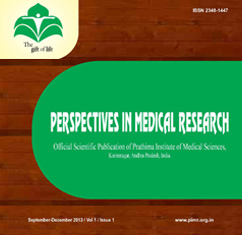Integrating Economics and Law in Medical Education: An Urgent Need for Indian Medical Schools
Introduction
Medical education in India and across the globe follows a holistic approach, blending the science and art of medicine. Medical students are also taught that medicine is not just about diagnosing and treating diseases but also about understanding the interrelationship between doctor, patient, and sociocultural factors. 1 Empathy and effective communication built a bond between the doctor and the patients. At times this harmony gets disturbed, particularly in the era of the consumer-driven healthcare system. 2 Now it has become increasingly clear that the economics and legal frameworks governing healthcare are as crucial as clinical skills, which often lags behind. 3 Integrating economics and law into medical education is needed to address legal and ethical issues in clinical decision-making for the smooth function of the healthcare system. 4, 5
The introduction of the Consumer Protection Act (CPA) in India has touched new dimensions of the traditional doctor-patient relationship reinforcing patient rights and promoting accountability. 6 Similarly, economic pressures such as rising treatment costs, different free government schemes, insurance policies, and the concept of the medical tourism industry further add to the complexity of the healthcare system. The CPA, which brought healthcare under its purview, makes doctors increasingly vulnerable to legal action. 7 Lawsuits for medical misconduct are increasing in India. 8 Improper informed consent, poor communication, or inadequate explanation of the financial implications of therapies are the main causes of many of these situations.
Need of Integration: The Competency Based Medical Education (CBME) curriculum by the National Medical Commission (NMC), including Attitude, Ethics, and Communication (AETCOM), early clinical exposure for undergraduate medical education has improved the learning of medical students. 9, 10 The current medical education system in India unfortunately continues to focus almost exclusively on clinical sciences. Subjects like medical ethics, economics, and legal frameworks are touched upon very superficially, leading to difficulty in dealing with the challenges they face in real-world practice. In contrast, medical education in many developed nations includes robust training in these areas.
In a few countries, an integrated approach comprising medicine, economics, law, and ethics is followed into the curriculum, recognizing that modern medical practice requires a holistic approach including clinical expertise as well as a comprehensive understanding of the healthcare system as a whole. The American Medical Association (AMA) recommends including training in healthcare economics and law along with medical knowledge. 11 Due to the fact that physicians in the United States frequently interact directly with insurance companies, their decisions can have a substantial financial impact on both their patients and insurance companies. European countries like the United Kingdom and Germany have also adopted the integration of law and economics into medical curricula. In the United Kingdom, medical students are taught about the National Health Service (NHS) and the legal frameworks that govern patient care, including the rights and responsibilities of doctors and patients. 12
Way forward
Lack of legal and economic education in India leads to maldistribution of resources, unregulated growth, and unimodal admission procedures, resulting in lower standards of medical care. 13 It is high time to rethink and implement health economics and legal aspects of healthcare. Healthcare financing, insurance models, and the economic impact of medical decisions should be taught early in the medical curriculum. Medical malpractice laws, CPA, patient consent, and privacy issues should be addressed in sufficient detail. This will help budding doctors understand the financial aspects of running their practice or working within a hospital, improving patient outcomes by allowing for more informed, cost-effective treatment choices and health technology assessment (HTA). 14
Integrating medical law into the curriculum at an early stage was perceived positively for medical students. 15 Integrating law and economics into medical school curricula presents challenges but can be achieved with a structured approach. 16, 17 A multidisciplinary approach to medical education could be promoted by coordination between medical institutions and organisations that specialise in economics and law. Additionally, medical students could benefit from guest lectures, seminars, and workshops by legal and financial experts who work in the healthcare sector. Continuing medical education (CME) programs should include modules on law and economics in regional and national conferences. This would allow doctors who have already completed their formal education to stay up to date with the changing healthcare practice.
Conclusion
The practice of modern-day medicine is not confined to clinical expertise only; rather, it incorporates the delicate dynamics of law and economics as well. Integrating economics and law into medical education is essential for fostering efficient medical practice and improving patient care. By integrating healthcare economics and legal frameworks in the curriculum, India can ensure that its doctors are skilled enough to tackle the complex systems of healthcare in which they practice. This integration will equip future physicians with the necessary skills to face the economic and legal complexities of healthcare, ultimately leading to better resource utilization and improved healthcare outcomes and patient satisfaction.
Funding: None
Conflict of Interest: None Declared
Author Contribution: All the authors involved in this study have contributed equally at all stages of work
Acknowledgements: I would like to express my appreciation to all those who have supported and contributed to the completion of this project


